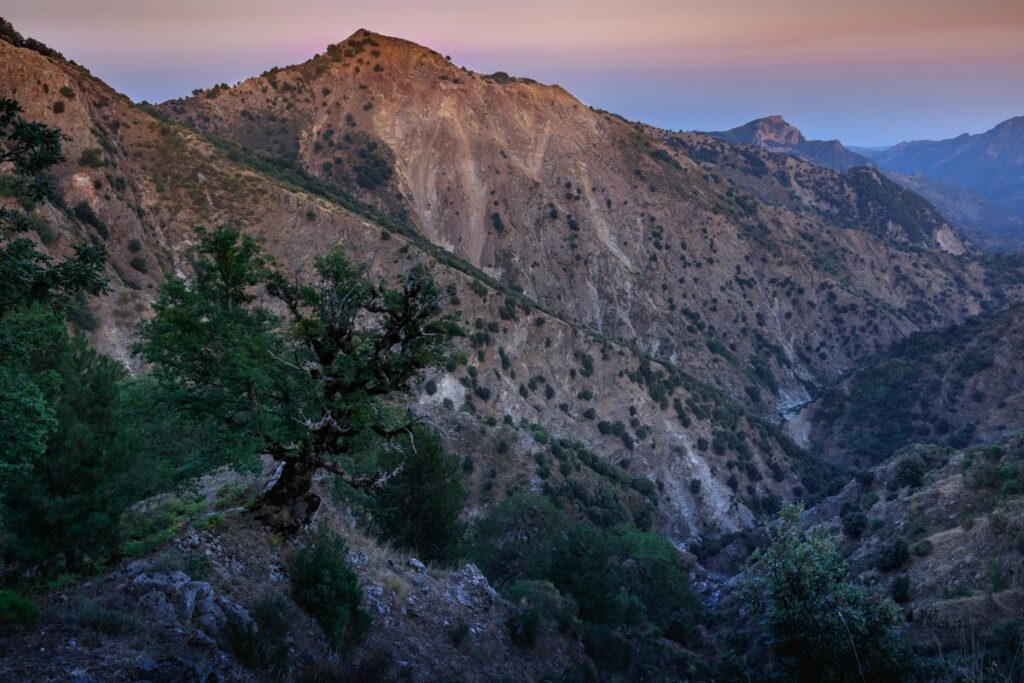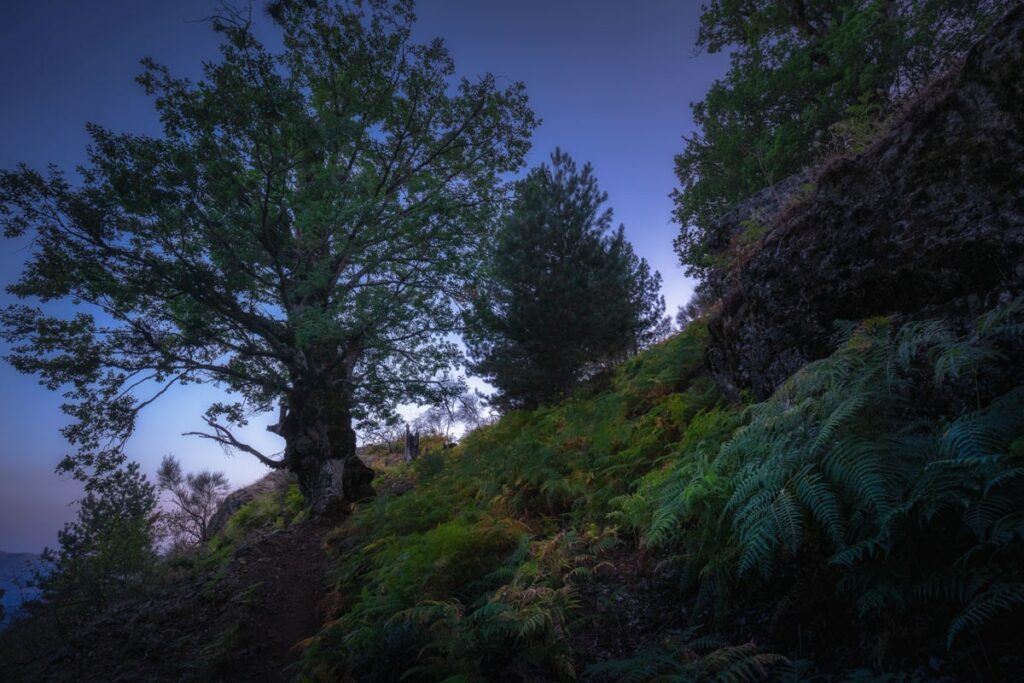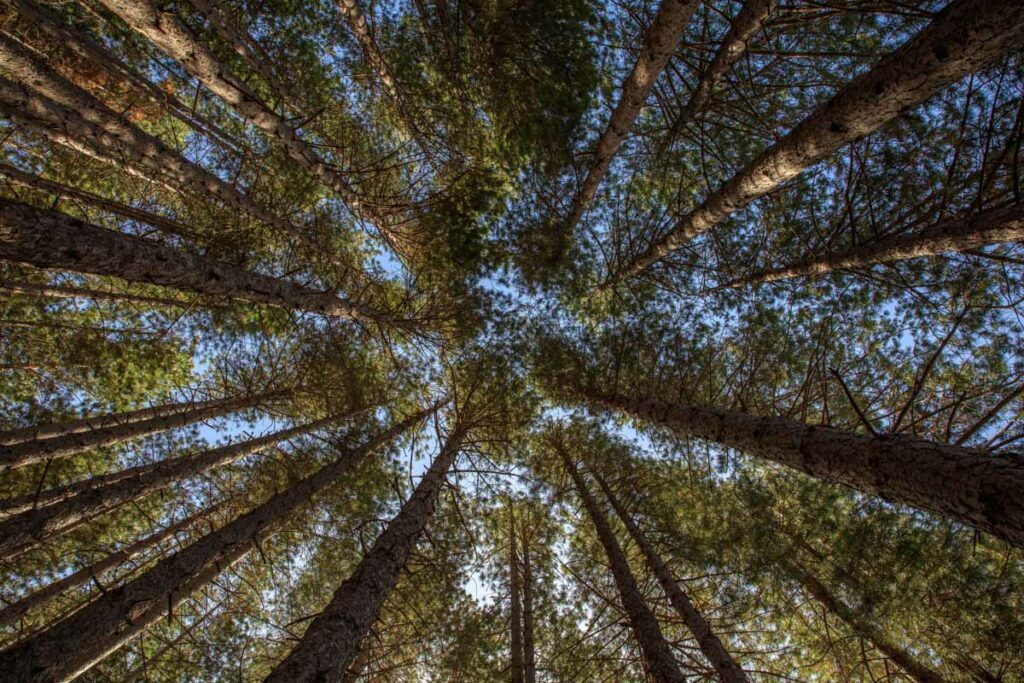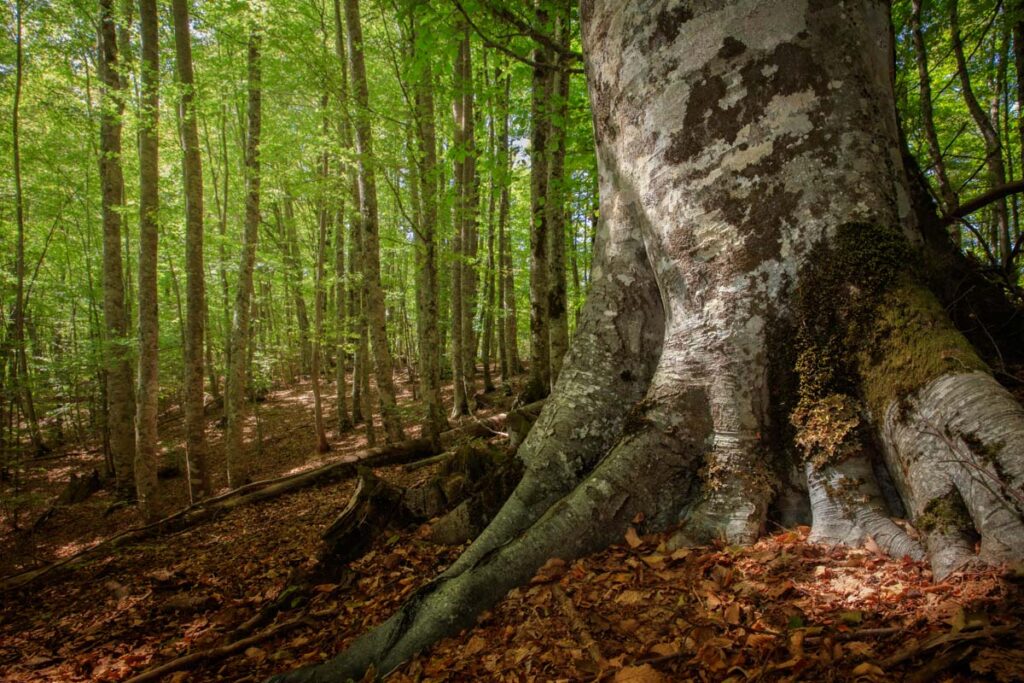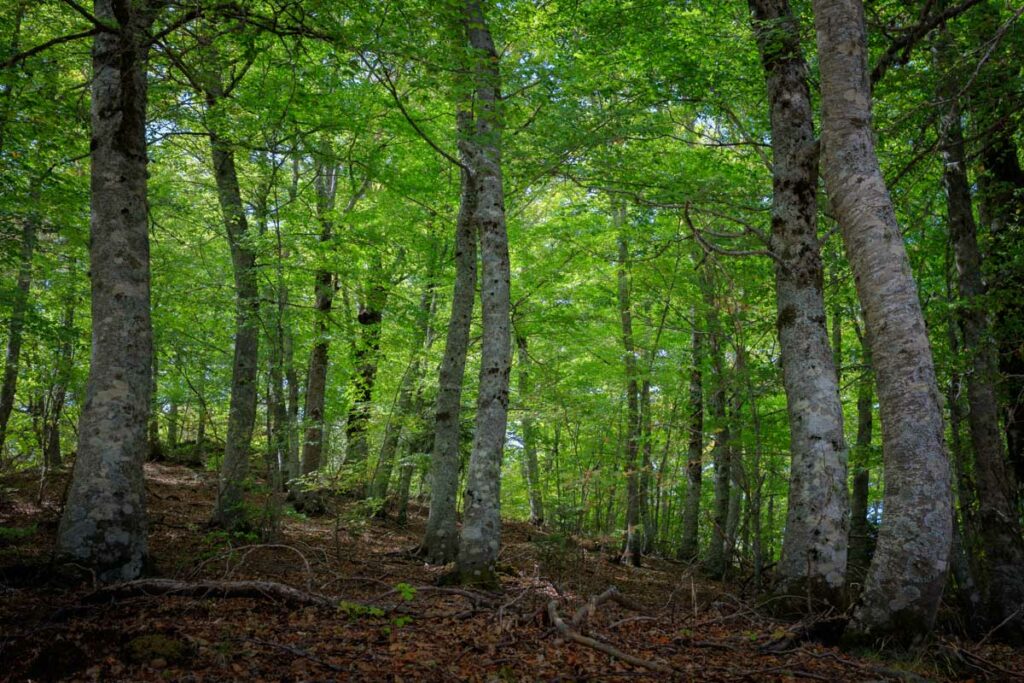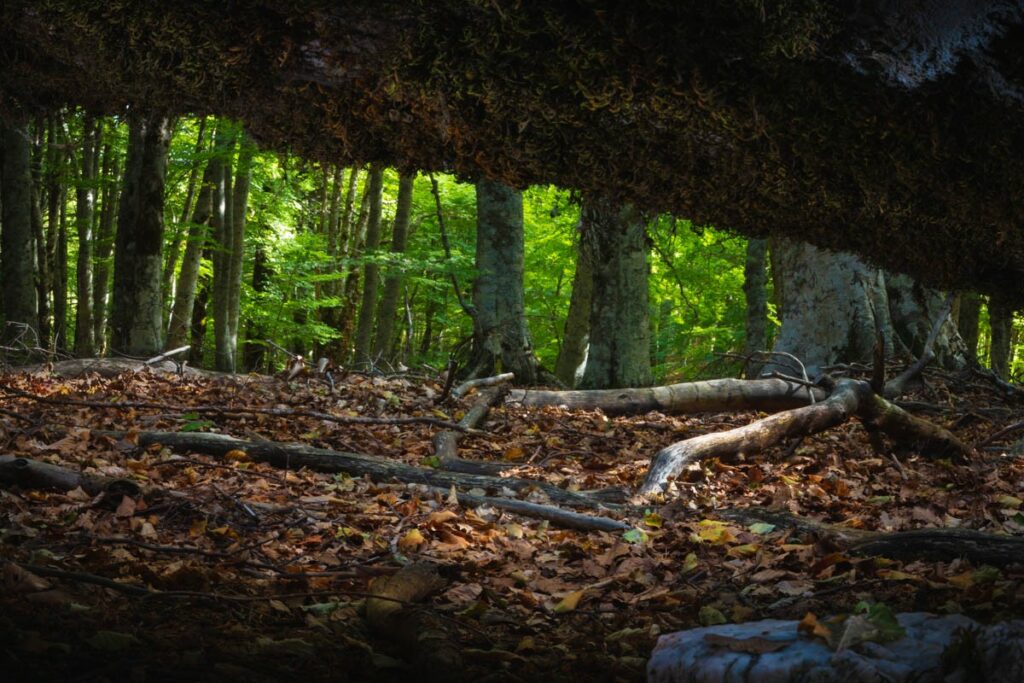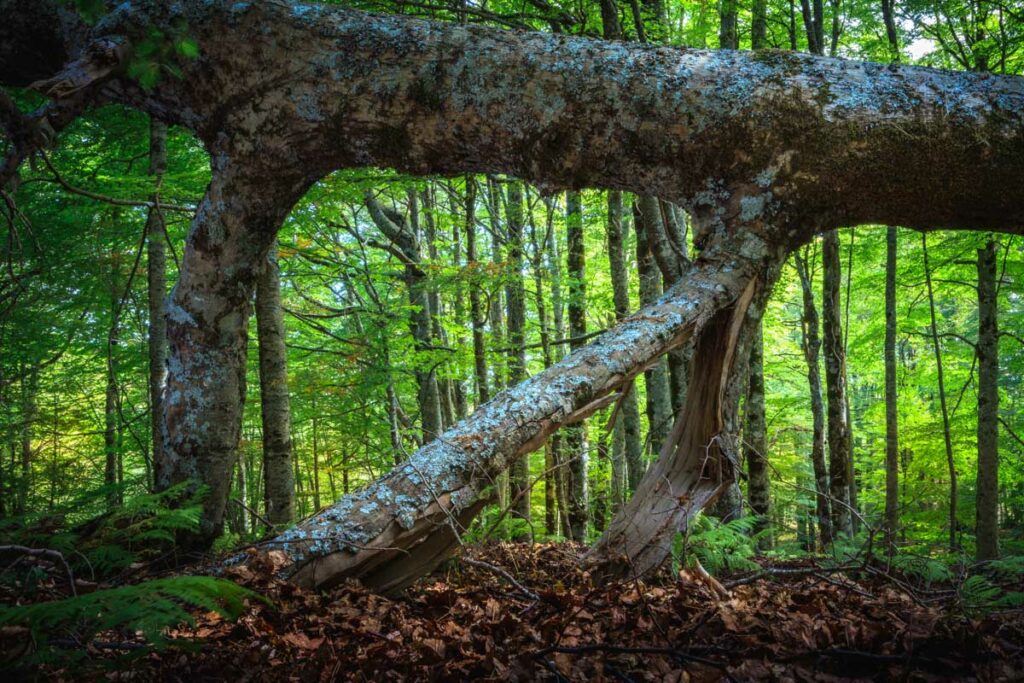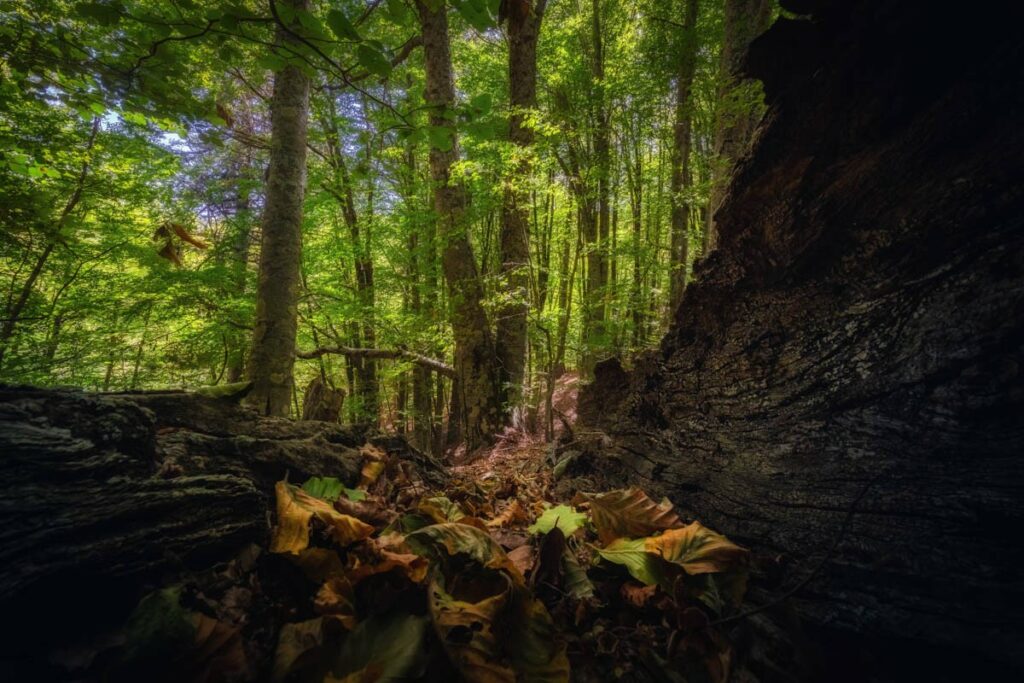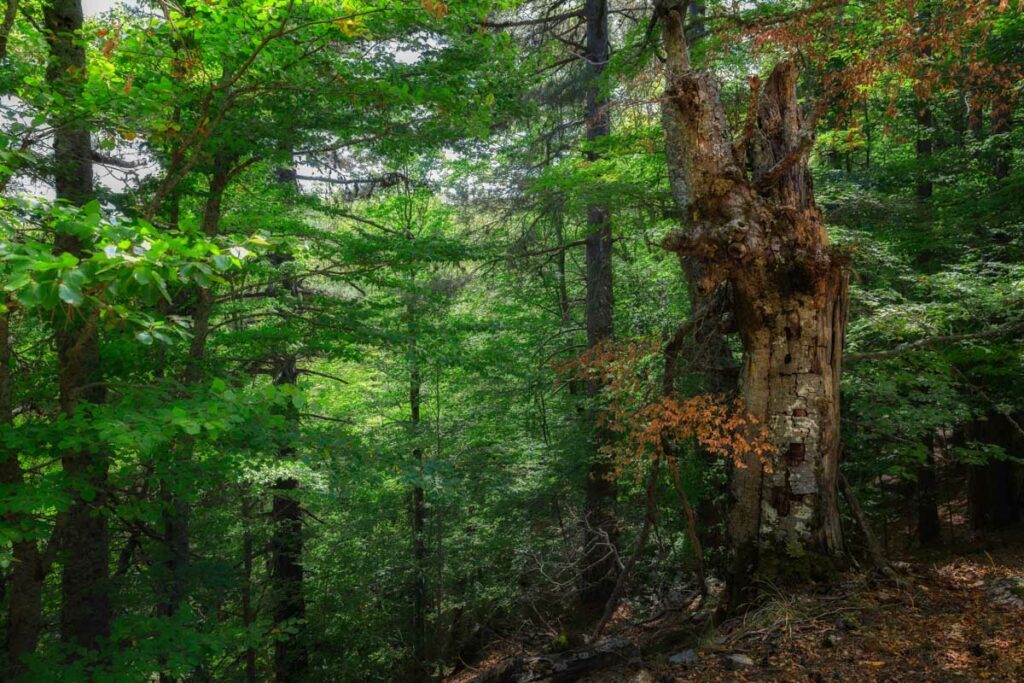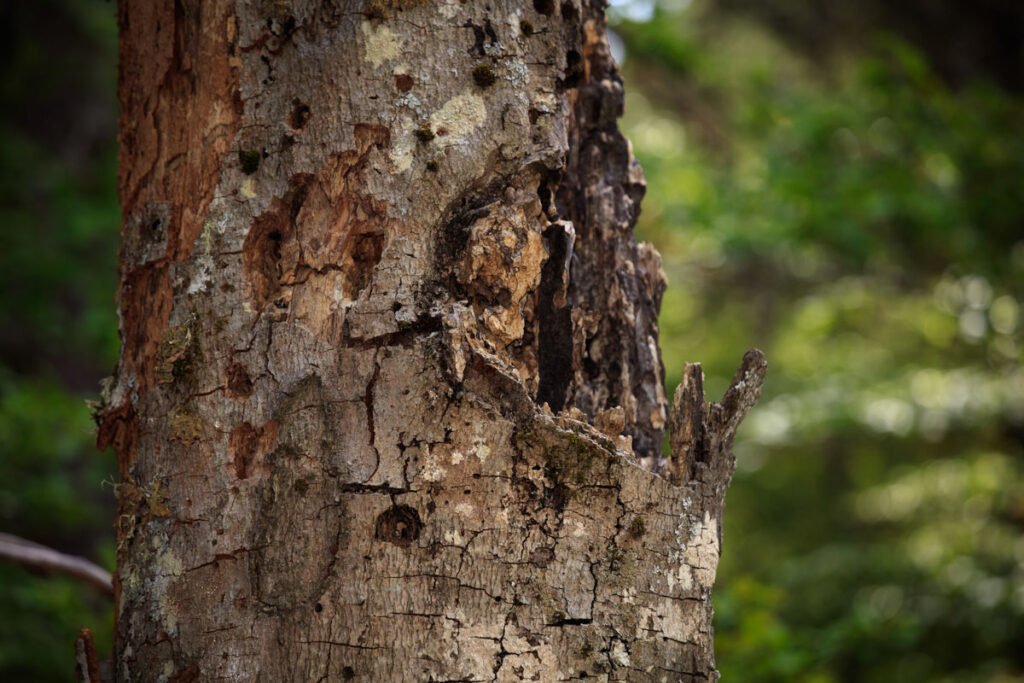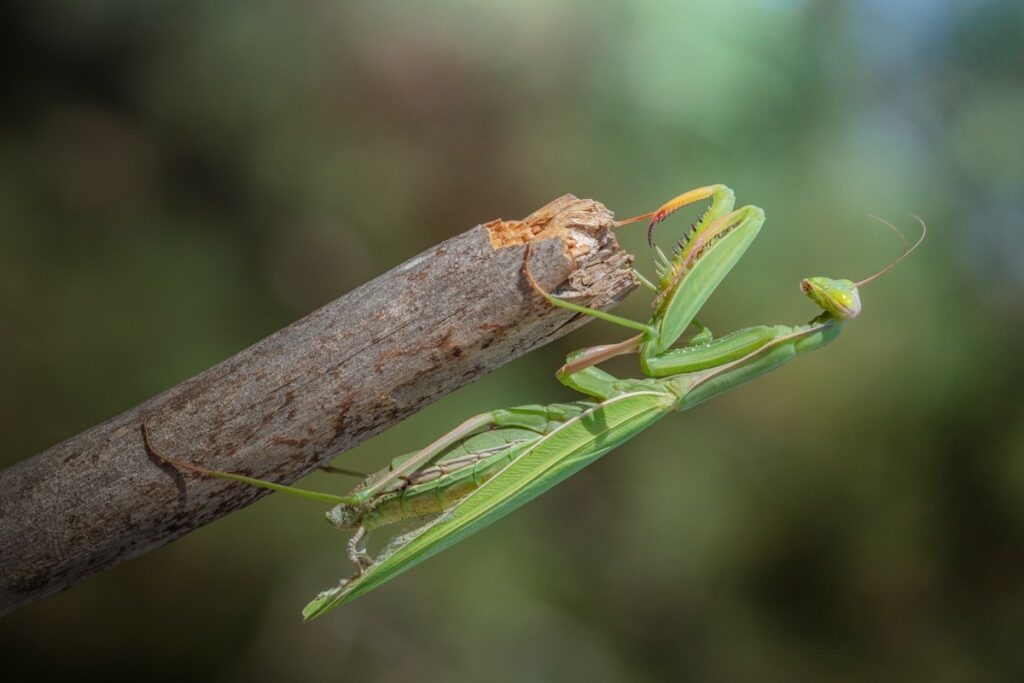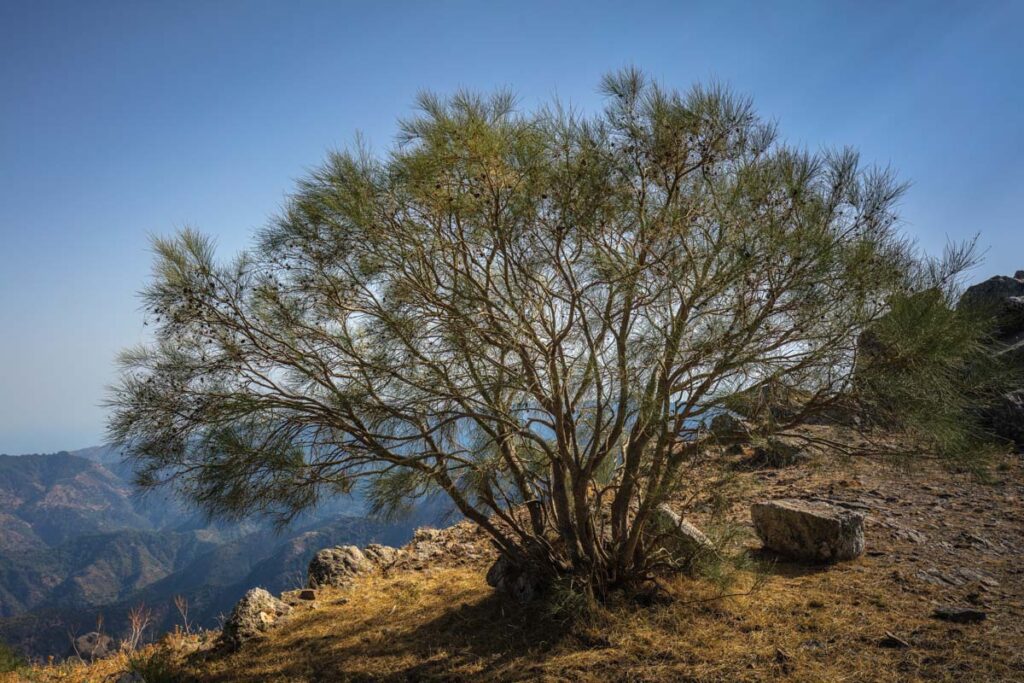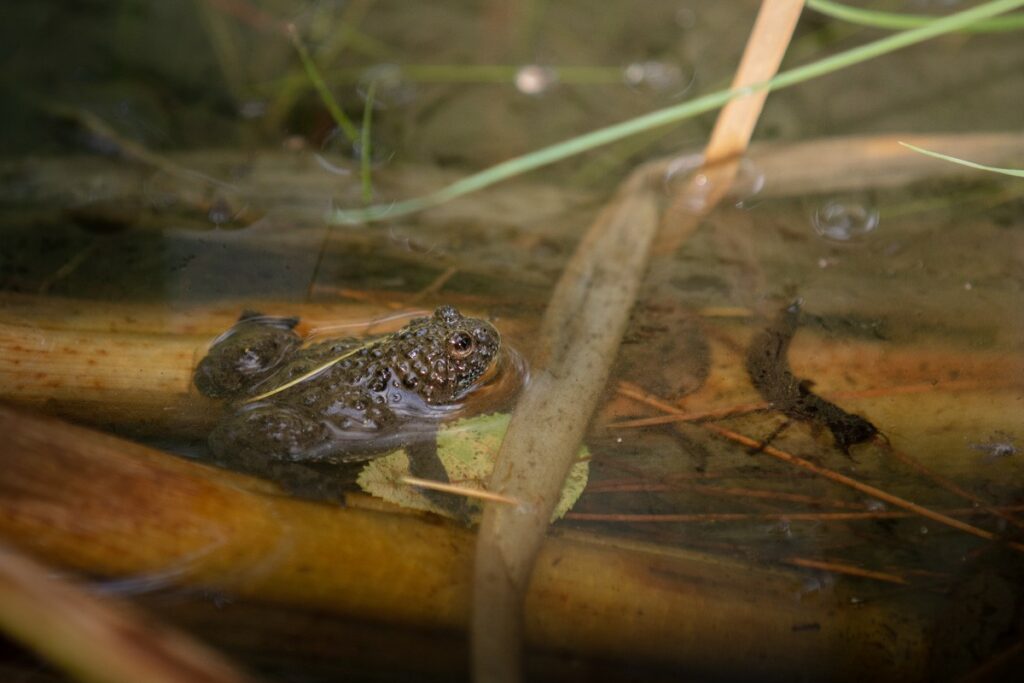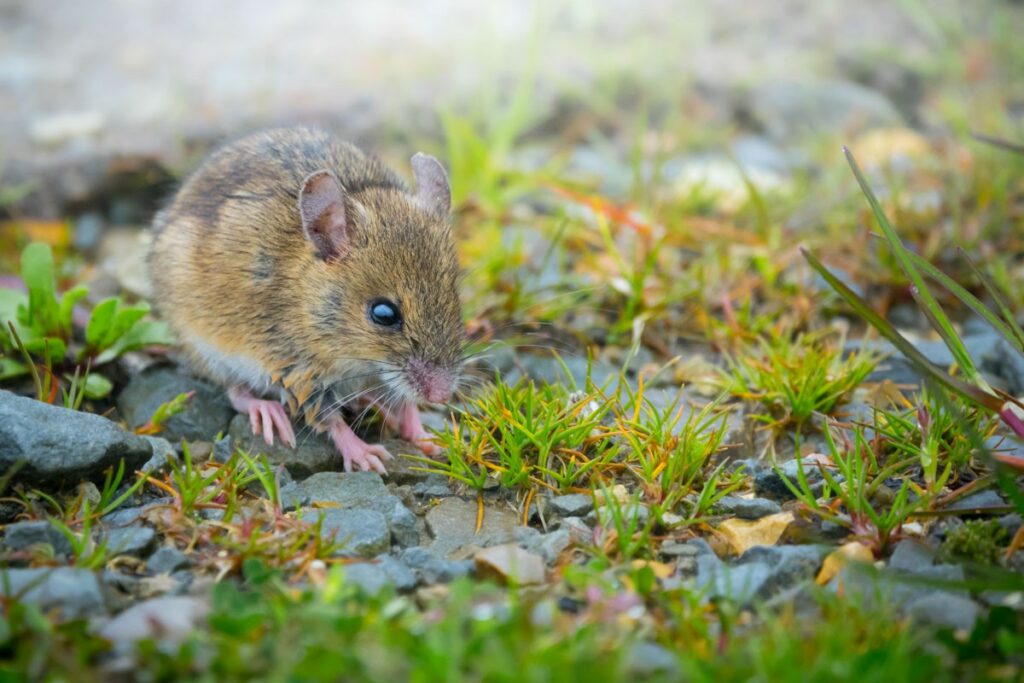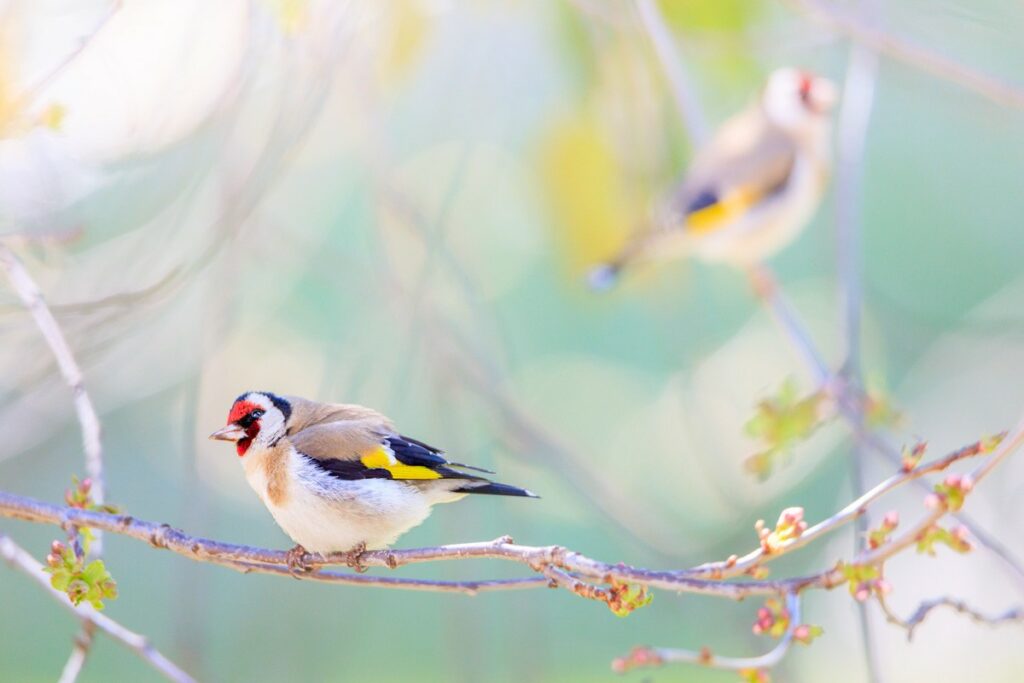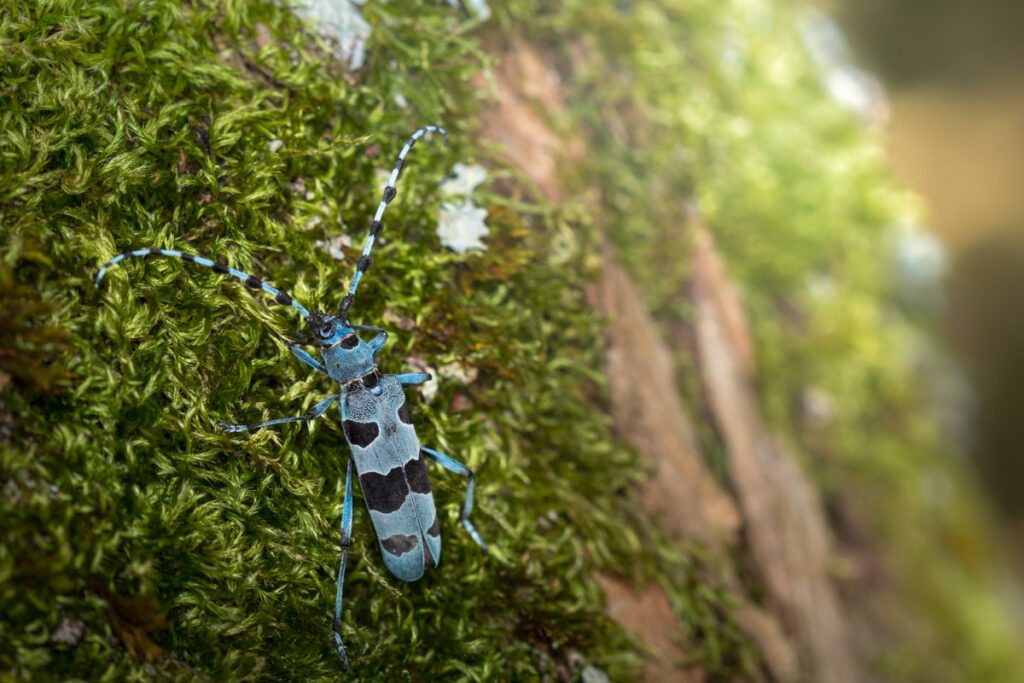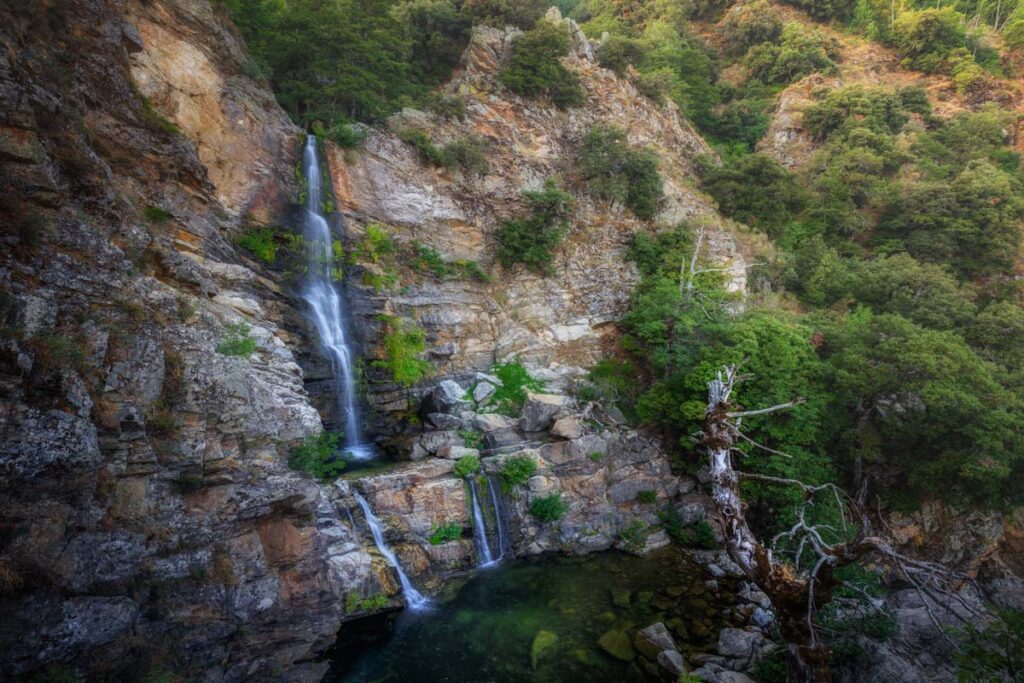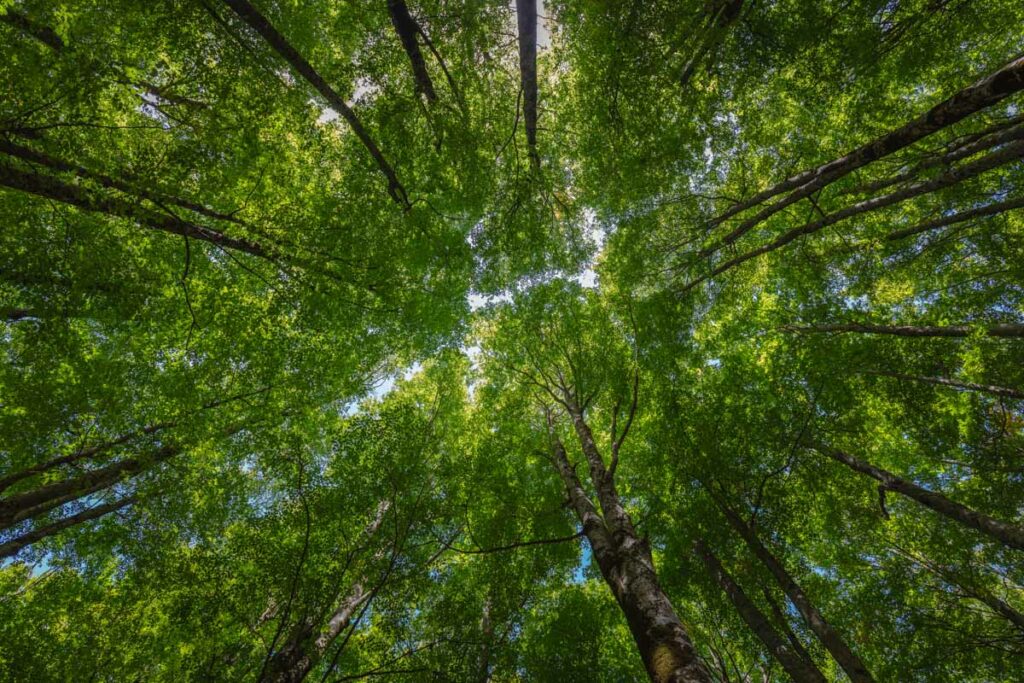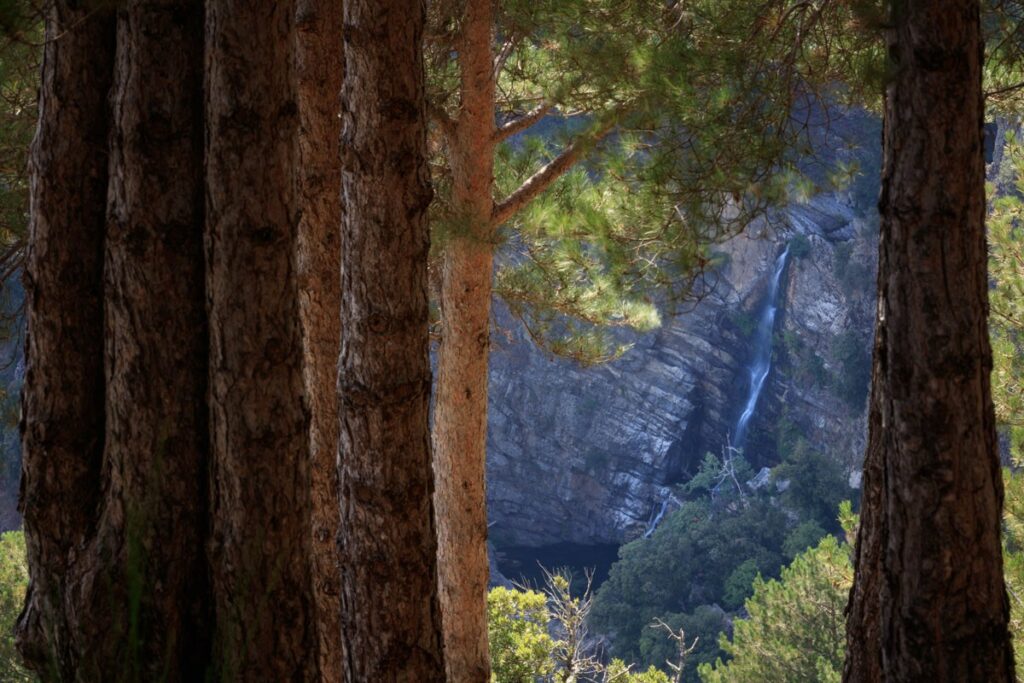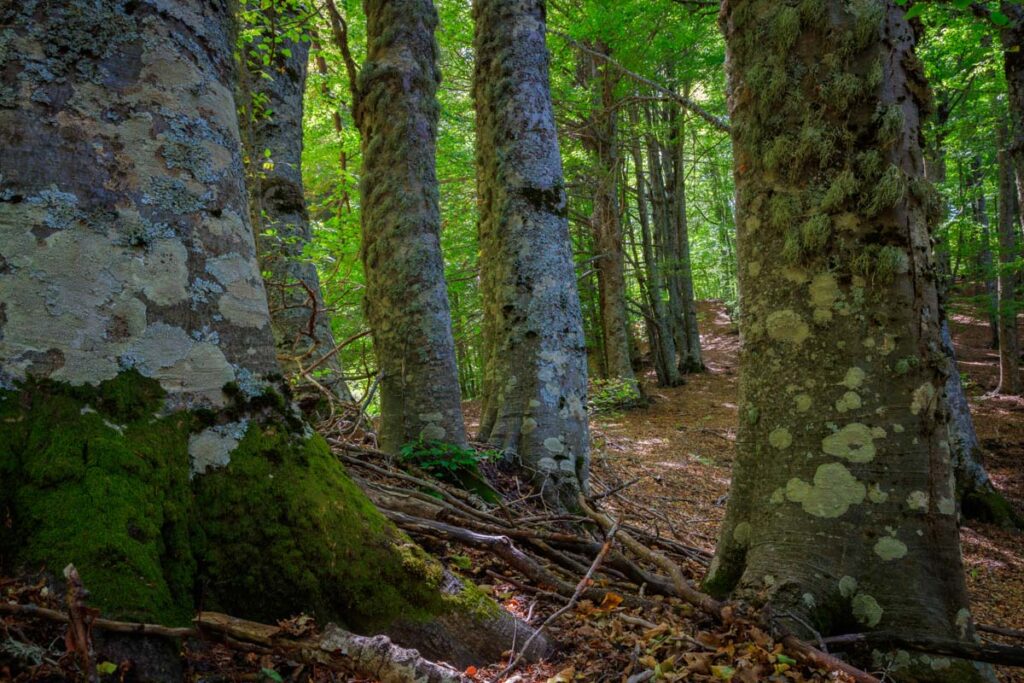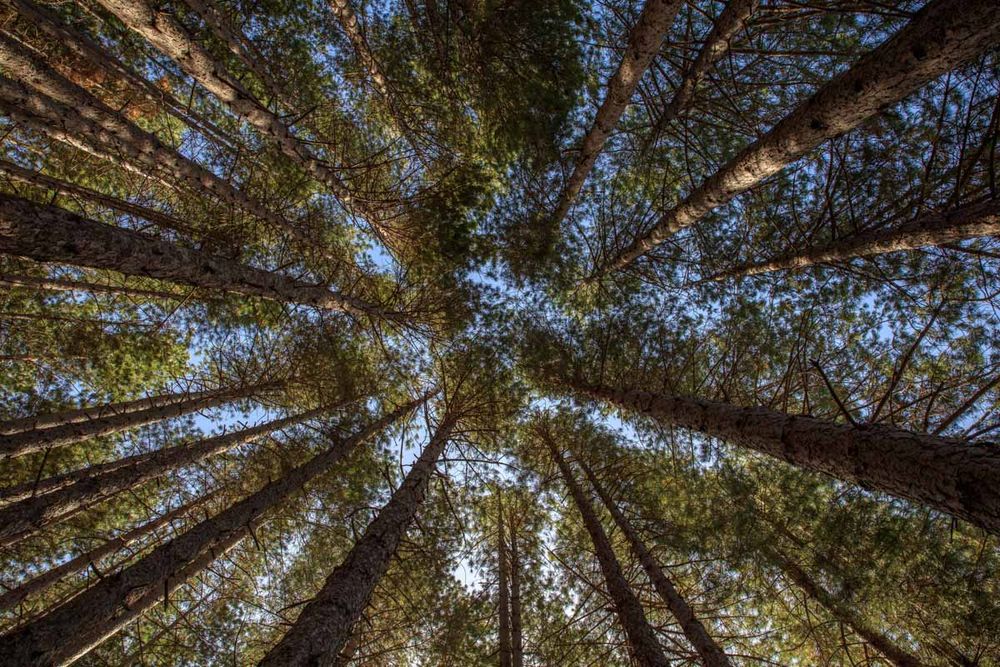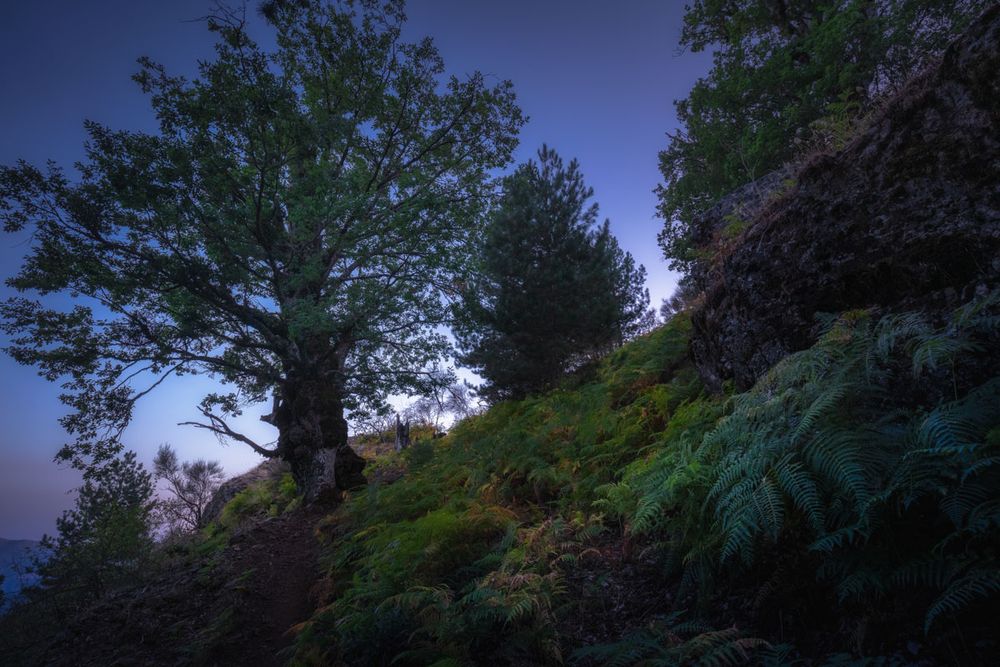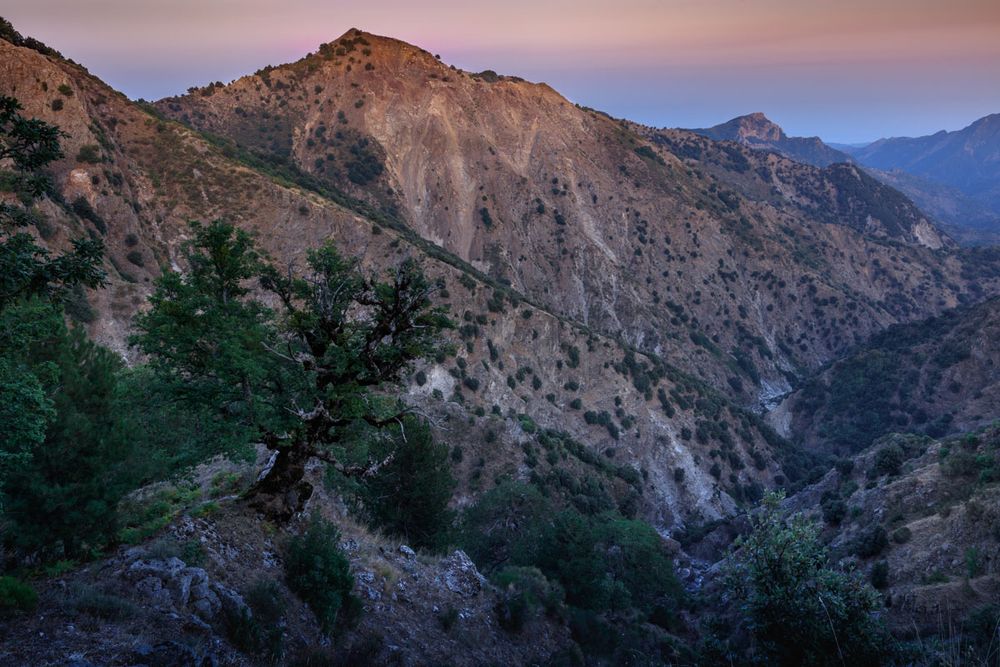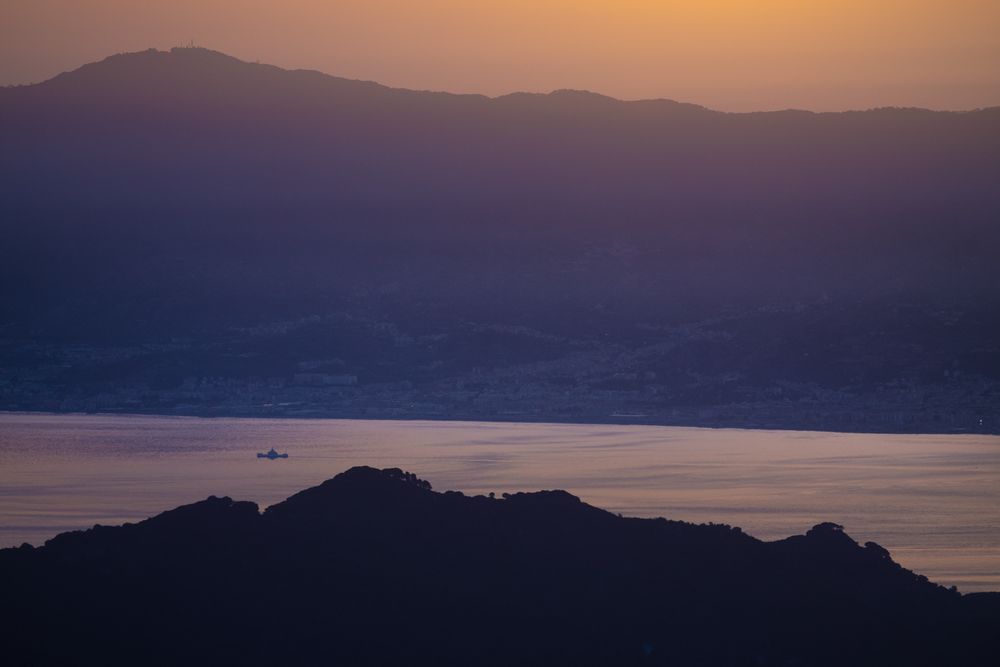Aspromonte National Park
The area
Evocative landscapes, paths overlooking breathtaking panoramas, an international geological heritage, immense forests of centuries-old trees, rare flora and fauna of sublime biodiversity. Aspromonte is heart and passion, authentic, wild beauty, closely linked to an unchanged historical identity. This territory is one of the most geologically active areas of the Mediterranean, with the consequent creation of steep landscapes, almost inextricable gorges and ravines that climb a short distance from the sea up to 2000 meters. The geological-geomorphological peculiarities of Aspromonte make his mountains unique in the geological and geographical panorama (and not only for the physical aspects) of Europe and outline real “geological landscapes”, which constitute “Geosites – Network of Geosites – Geopark”. Due to its characteristics, the Park has become part of the World Network of UNESCO Geoparks. This insertion is a complex and articulated path which provides for a synergistic action of valorization of the geological aspects, linked to the culture and nature of the territory. Aspromonte Geopark project was born with the intention of safeguarding and enhancing one of the most particular geological heritages of the central Mediterranean. Aspromonte territory is characterized by a great landscape diversity as well as geo-environmental peculiarities and the presence of interesting historical-cultural realities rooted in an ancient past influenced by various civilizations. The resulting landscape is unique in the panorama of the central Mediterranean.
Aspromonte National Park was founded in 1989 for the protection and environmental protection of the territories of the Aspromonte section of the former National Park of Calabria, which existed until 2002His territory is within the province of Reggio Calabria and takes its name from the Aspromonte massif which means candid, white and dates back to the Greek populations of the Ionian coast who admired the white mountain formations of the massif. Montalto is the highest peak with its 1955 m. and offers a wonderful panorama of Calabria and the Sicilian coast. The territory of the park also has a great variety of plant and animal species and enjoys particular climatic conditions that favor an environment rich in biodiversity.
The forest
In the earthly heart of Calabria, within Aspromonte National Park, what everyone calls the Infernal Valley – a crossroads of atavistic suggestions and a garrison of extraordinary biodiversity – actually seems more like heaven than hell. The millenary giants seem to tell stories of yesteryear: they are the specimens of beech, silver fir and durmast oak that keep the secrets of an almost inaccessible handkerchief, and unpublished to the general public, of a region that never ends to amaze.
Located within Zone A of the Integral Reserve of the National Park, the ancient beech forest of “Valle Infernale” represents a southern outpost of the Apennine beech forests. It is located on the Ionian side of the Montalto massif around 1,500 m a.s.l. in the Municipalities of Samo and San Luca, in a historically inaccessible place (hence the toponym Valle Infernale), which has spared ecosystems from undergoing continuous human actions especially in recent decades.
The breathtaking landscapes that can be admired from “Croce di Dio Sia Lodato” and along the “Fiumara Butramo” are framed by the presence of the beech forest, a true outpost of the species’ resistance and resilience in the Mediterranean environment. In this place the beech and many other temperate climate species found an important refuge at the time of the last glaciation, differentiating genetic lines suitable for the Mediterranean climate which acquire an inestimable value in the face of global warming, as they are able to resist and respond to heat waves and droughts. Located in an area with a drier summer climate compared to other realities, the old beech forest is characterized by sudden changes in the vegetation, with mixtures of more thermophilic species such as the southern oak in correspondence with slightly warmer slopes, or with pioneer species like the Calabrian pine when the soils present are very thin. It is precisely by virtue of these specificities that this beech forest represents a unicum, together with its centuries-old specimens of beech, silver fir and durmast oak, its particular composition and structure, with the tree canopy affected by all the structural phases of the forest ranging from natural renewal, to senescence with its cavities, to dead wood in various stages of decomposition, habitat sites for numerous animal and plant species at risk of extinction.
With the presence of this remarkable natural capital recognized worldwide, the role of Aspromonte as a biodiversity hotspot is confirmed for the protection and safeguarding of complex forest systems, in partnership with the other national parks of southern Italy to create a real “network” of old-growth forests in the southern Italian Apennines.
The biodiversity
Current knowledge allows us to estimate in about 1,500 species of fauna and flora present in the territory of the Aspromonte National Park.
The high floristic richness of Aspromonte is to be connected to a series of factors: one of these is the geographical position of the Aspromonte massif, located in the center of the Mediterranean. The high diversity of plant species is also linked to the environmental heterogeneity found in the park area. The watercourses are rich in riparian vegetation and along the rivers it is possible to admire poplars, willows and alders and, in areas where the humidity is almost constant throughout the year, the giant bulbiferous fern, relict of the Tertiary period, Woodwardia radicans (L.).
At low altitude the most characteristic elements of the Mediterranean maquis reign (broom, cistus, holm oak, myrtle, phillyrea, strawberry tree) and holm oak woods. In the Park there are holm oak woods which, by extension and characteristics, represent unique examples at a national level. Going up in altitude, it is possible to come across southern oak which mixes with majestic pine forests and, even higher up, beech.
In the higher areas there are beech woods, sometimes mixed with silver fir which, that show unique characteristics in terms of its ability to adapt and grow and have been subject of numerous studies, including international ones. The natural pine forests are essentially present on the Ionian side and often have plants of considerable size such as the “Giganti di Acatti” and “Afreni di San Luca”.
The floristic biodiversity of the Aspromonte National Park is accompanied by an extraordinary fauna diversity. Among the mammals, the Aspromonte mountains represent the ideal habitat for the wolf, whose presence today is ascertained, despite having disappeared for two decades in Aspromonte; the wild cat, a skilled hunter of mammals and birds, the dormouse, a nocturnal animal very popular in European forests and also the forest dormouse, currently present only in Calabria and Friuli, are widespread. In the Park, the Calabrian black squirrel can easily be observed, particularly for the black color of the fur, rather than brown or red. Among the mammals it is also possible to spot the fox, the European pine marten, the beech marten, the European badger and the hare, with two species (Corsican and European). In the past decade, 75 individuals of the Italian subspecies of roe deer were reintroduced, bringing back to nature a species absent from these territories for about a century.
The Aspromonte Park also hosts reptiles, including the Eurasian vipers, the four-lined snake and the western green lizard. An important presence is that of the Hermann’s tortoise, an ancient animal with a yellowish color and black spots.
Among the amphibians, in addition to the more common species, we can find the fire salamander, the spectacled salamander and the Apennine yellow-bellied toad, unmistakable due to its particular yellow-orange ventral colour.
There are some invertebrates of community interest such as Rosalia alpina and Osmoderma italicum. There are also many species of lepidoptera, including the threatened Parnassius apollo, a species strongly linked to the open areas of high altitude characterized by herbaceous species of the genus Sedum. Finally, Mediterranean trout and white-clawed crayfish can be observed in the streams of the Park.
Getting here
The Park, located in the extreme south of the peninsula, can be reached by car from Reggio Calabria, taking the Gallico exit and continuing along the SS. 184 for Gambarie. Coming from the south via the A3 motorway, it is necessary to exit at Bagnara Calabra and continue along the SS. 112 for Sant’Eufemia d’Aspromonte – Gambarie.
To better visit the Park, travel along the Ionian or Tyrrhenian coast, then head inland using the 37 municipalities of the Park as points of reference, which open the way to the valleys.
By train it is possible to refer to the stations of Villa S. Giovanni and Reggio Calabria while by plane it is possible to consider the airport of the Strait of Reggio Calabria and the International Airport of Lamezia Terme. Finally, by bus there are connections with the Central Train Station of Reggio Calabria. For information:
Train timetables: www.trenitalia.com
Airports: www.aeroportodellostretto.it e www.sacal.it
Bus: www.atam-rc.it
The trails
Aspromonte is full of magnificent and evocative landscapes, of paths with different panoramas that allow you to cross areas where sea and mountains appear so close as to seem to be one. Walking along the paths it is possible to cross the entire Aspromonte and extend your gaze to the various natural beauties, from waterfalls to narrow valleys, from historical monuments to small villages and numerous rocky agglomerations. Those who love nature cannot fail to be impressed by the immense forests of secular trees and, again, by the rare fauna such as the roe deer, which thanks to the Aspromonte Park Authority has returned to live elusively in our woods. The one proposed below is a simple but fascinating excursion to discover the “Valle Infernale”, the place where the ancient beech forest that has obtained recognition by UNESCO is located. However, the possibilities and points of interest around it are numerous and therefore deserve time and attention. On the National Park website it is possible to discover the trail network and the main proposed routes, useful information for planning your visit to this wild territory full of surprises in good time.
http://www.parconazionaleaspromonte.it/pagina.php?id=40
LA SELVAGGIA VALLE INFERNALE
A path between millenary oaks and the most ancient beech trees in the south of Europe.
Length about 7 km
Height difference about 200 m
Total time around 2.30 hours
Medium difficulty given the easy route and the reduced height difference
Description: Spectacular route that initially winds through the Pollia wood, where it will be possible to observe the ancient southern Italian sessile oak of the Park, including Demetra, which with its approximately 1000 years old boasts the title of oldest oak in the world. Entering the heart of the beech forest along the way it will be possible to observe the peculiar mixtures, some typical, such as those with the silver fir and the Calabrian pine, others less usual with respect to the canons and scientific schemes, such as with the oak and, in the areas hotter, with holm oak. At the end of the beech forest, returning inside the pine forest, along the Ferraina stream, you reach the Canovai refuge, from which it is possible to make an excursion to the Forgiarelle waterfalls. The excursion is also a way to touch the dynamics of the vegetation of the Valle Infernale beech wood, the last outpost of the southern beech woods, where the species has adapted and resisted over the millennia to the events linked to climate change.
Things to do
For enthusiasts, Aspromonte is a mountain to be discovered: long walks (even by mountain bike), trekking, excursions are some of the activities that can be practiced within the Park. In addition to the official network of paths, there are also thematic itineraries in stages such as the “Sentiero del Brigante”, a suggestive journey on foot from the Aspromonte to the Serre, and the “Sentiero dell’Inglese”, a suggestive path in honor of Edward Lear, traveler mid-19th century Englishman who was among the first to enter the lands of the Kingdom of the Two Sicilies and collect his stories in the “diary of a journey on foot”.
For bike lovers, between the Aspromonte, the Sila, the Pollino and the Serre, the Ciclovia dei Parchi della Calabria offers 545 km of authentic discovery and new experiences between landscape and eco-sustainability. The last three stages cross the Aspromonte and are often characterized by breathtaking panoramic points. Pedaling along the luxuriant paths where you meet the wildest nature, you can visit truly special and representative places of the Park such as the Pietra Cappa monolith, the Gambarie biodiversity observatory, the Mundu and Galasia waterfalls, the Serra where Piedmontese soldiers wounded Garibaldi until they reached Lungomare Falcomatà in Reggio Calabria.
The Park Authority has set up the “Network of Park Museums“. It expresses the will of the administration to combine its cultural resources in a single project which entrusts the Museum with the role of protagonist, as an instrument of cultural development of the territory and social cohesion. The goal is to communicate and promote cultural heritage in a joint way, being it relevant from different points of view: historical, cultural, artistic, environmental and productive. The network embraces different types of museums, from the artistic sector to the naturalistic-scientific one up to the archaeological one. This heritage is both the material heritage on which the action of safeguarding and protection is concentrated, and it is the ideal and intellectual heritage that lies upstream of it and which constitutes the territorial entity as a community.
Also available to visitors, the Visitor Centers offer a real and fascinating journey into the world of nature, the history of the area and the people who live there through exhibition panels and films. The structures offer the synthesis of the environmental and cultural heritage of the Park, through theming inspired by the naturalistic and cultural peculiarities of its territory. At the Visitor Centers of the Park it is also possible to find information material on the protected area and to buy gadgets, guides, maps and publications of the Aspromonte National Park.

